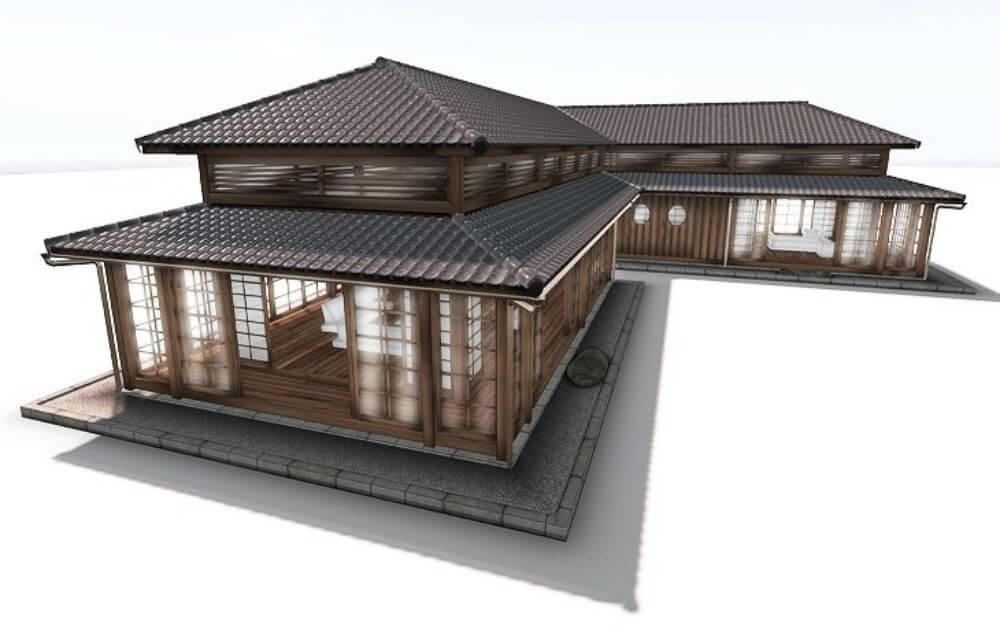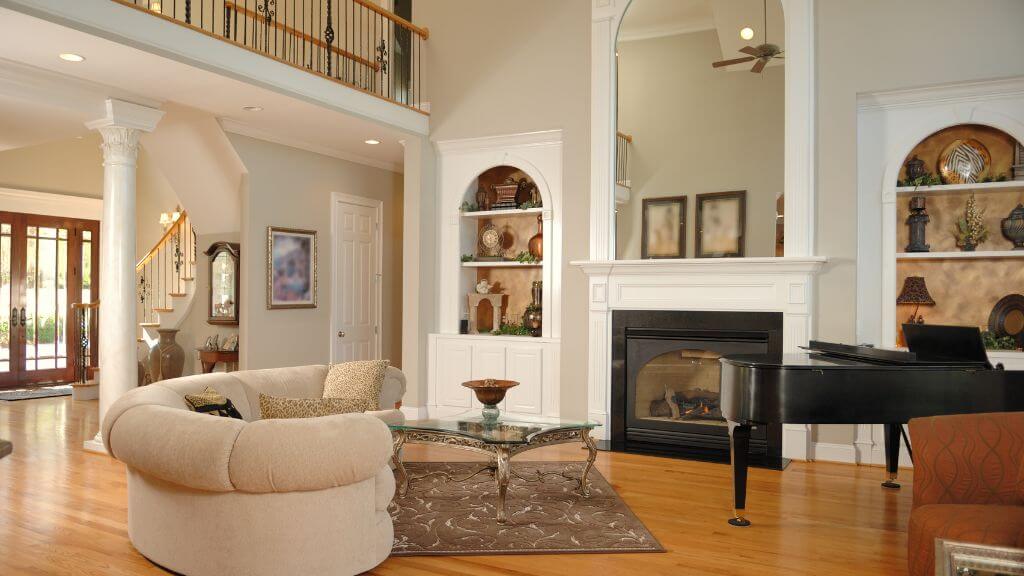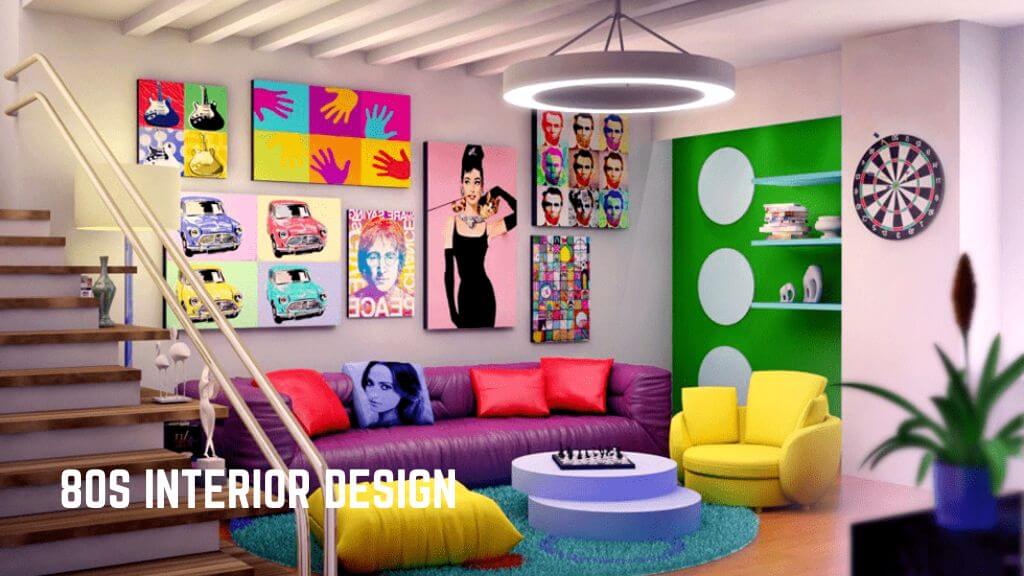Whether you’re moving into your first apartment, or you’re renovating your home, there are some key considerations that you need to keep in mind when it comes to traditional Japanese house layout. Keeping these tips in mind will ensure that you end up with a beautiful home that will fit your family’s needs.
Social spaces connect in an open, continuous flow
Firstly, we aren’t talking about the eponymous city of Tokyo, but instead the city of Ota, which is just south of Tokyo and a hop, skip and a jump away from the country’s capital. In a way, this quaint little village is a laboratory in which to test new and emerging technologies. The burgeoning tech industry has spawned an impressive plethora of start-ups, many of which have been able to capitalize on the country’s robust and well-funded aerospace industry. In terms of architecture, a small number of pioneers have been able to leverage this dynamism to create some of the most intriguing buildings of our time. The likes of the aforementioned pioneers have had the opportunity to test new and emerging technologies and to evaluate the latest advances in construction and materials. It is therefore not surprising that many of them have a knack for designing the hottest houses on the block.
It should come as no surprise that the country’s most popular architects have made their mark on the global stage with their latest wares having been exhibited at a handful of international design competitions and exhibitions. As such, the Japanese building industry has become a hotbed of innovation and discovery. From the latest in fenestration technology to the latest in fire-proofing, Japan’s architects have made their mark with the world’s most innovative and innovative buildings. With 90% of the nation’s population living in urban environments, the Japanese are in the midst of a major construction and renewal program.
Tatami flooring is the most essential element
Among the many aspects of the traditional Japanese house layout, one of the most important is tatami flooring. This type of flooring is made from woven rush. Originally, tatami was made of rice straw. Today, they usually have a core made from wood chip boards or polystyrene foam.
When people are using tatami in their homes, they must be careful to maintain them. They need regular cleaning, yearly maintenance for bug proofing, and maintenance to prevent mold from forming.
There are two types of tatami mats: Oki Tatami and Unit Tatami. Oki Tatami is a rectangular mat. It is made from hardwood. It is popular for both traditional and modern homes.
Oki Tatami is considered to be a good choice for people who want a natural floor mat. It is easy to clean. It is very durable. It is available in a wide variety of colors.
Tatami mats are also available in many sizes. Most are about 0.9 meters x 1.8 meters. However, the size of mats varies according to the region. The edges are usually covered with fabric.
When people are entering a Japanese house, they are required to take their shoes off. This custom was established to avoid bad luck. They should also tread gently on the floor, especially the edges of the tatami.
Tatami mats should be cleaned regularly, especially when there is water accumulation. Water can cause mold to grow. If there is mold, you should take measures to remove it. Also, you should not step on the cushions of others.
There are several tatami mat manufacturers, each offering a different product. Some offer foldable mats, tatami play rugs for kids, and tatami yoga mats.
Toilet and bathroom are separated
Having a toilet and bath in the same room is not common in Japanese homes. Traditionally, the toilet and bathtub are separated in a room, which is referred to as an ofuro. This is a deep, soaking tub that is heated to a high temperature before use.
Unlike American homes, Japanese bathrooms are compact and designed for ease of use. They often include minimal shelving. They may also have a shower caddy for shampoo bottles, razors and loofahs. Some homes even have a TV in the bathroom for entertainment purposes.
Japanese toilets are more elaborate than their counterparts in other developed nations. They may include a bidet, a small sink-like area at the top and a heated seat. They are also more technologically advanced, including advanced features that are not found outside of Asia.
The Japanese toilet also has the most advanced toilet seat. The seat has a heated surface to make it easier to flush. It also has a deodorizer and deodorizing technology. It may also have an electronic bidet.
Taking a bath in Japan is more about relaxation than hygiene. They may even bathe in a tub outside the bathroom. Most people use a bathing tub to soak after a long day at work. This process is usually accompanied by rinsing off soap before entering the water.
Compared to American bathrooms, Japanese toilets are the cleanest. They are also designed to minimize humidity. They come in two varieties, a squat toilet and a more modern, more elaborate model.
In the West, it’s not uncommon to see a bath and a toilet in the same room. It makes sense for health reasons. However, it’s not unusual to see multiple bathrooms in foreign countries. For example, some Japanese families bathe in the same room.
Wooden engawa verandas
Traditionally Japanese houses are characterized by wooden engawa verandas. These verandas serve as a way for the interior of the house to connect with the outside. This provides a unique opportunity to connect with nature, and it is also a great place to relax.
Japanese traditional housing has always emphasized wood as the main building material. Wood has the ability to absorb moisture from the air and to retain heat. It was also used to provide a barrier between delicate shoji panels. These panels are translucent, which allows for different levels of shade. They can be left open during the day, or closed during cold weather.
A typical traditional Japanese house layout includes a genkan entrance hall. A genkan is a place for family members to remove their footwear before entering the house. The engawa is also called the “edge side” of the house. It’s usually located outside the Shoji.
The engawa is also often used as a casual “guest room”. In addition to displaying curios, it can also serve as a gallery. The engawa is also used to hold outdoor events. Many fireworks designed for home use are lit on the engawa.
Traditional Japanese houses also feature raised flooring. This prevents the floor from being flooded in heavy rain. It’s also designed to provide ventilation. Some engawa are equipped with sliding doors, which quickly close to keep the space cool or warm, depending on the season.
The engawa is also used as a separator between outer storm shutters. It can be used for viewing garden plants, and is often decorated with collectibles. It’s also a great place to watch the stars at night.
Genkan (Xuan Guan) is the entranceway
Traditionally, there is a genkan (pronounced g’n or g’noo) located just inside the entrance to the house. A genkan is a small but imposing enclosure that houses the most important items in a Japanese household. This area is usually decorated with a nice smattering of swag. A genkan is usually accompanied by a toilet, tatami mats, and a sink to wash the aforementioned swag.
In a modern context, the genkan is most likely replaced with something as trite as sandals. In the past, a genkan was a place to change clothes, wash, and take care of the pets. Today, most Japanese houses feature two or more entrances. This is a good thing because it means there is more than one way to get from point A to point B. Having two entrances is a good thing for both residents and visitors, as it reduces the amount of petty squabbling, and the amount of booze consumed by both parties. This also allows for a more egalitarian social structure.
The genkan is also a good place to store the opulent tee, and is a place to tuck the best of the best to the rear, as well as toss the rest. The genkan is not for the faint of heart, however.
You can follow more Articles
Best Bloxburg House Layouts And Style
Top 6 Famous Interior Designers



